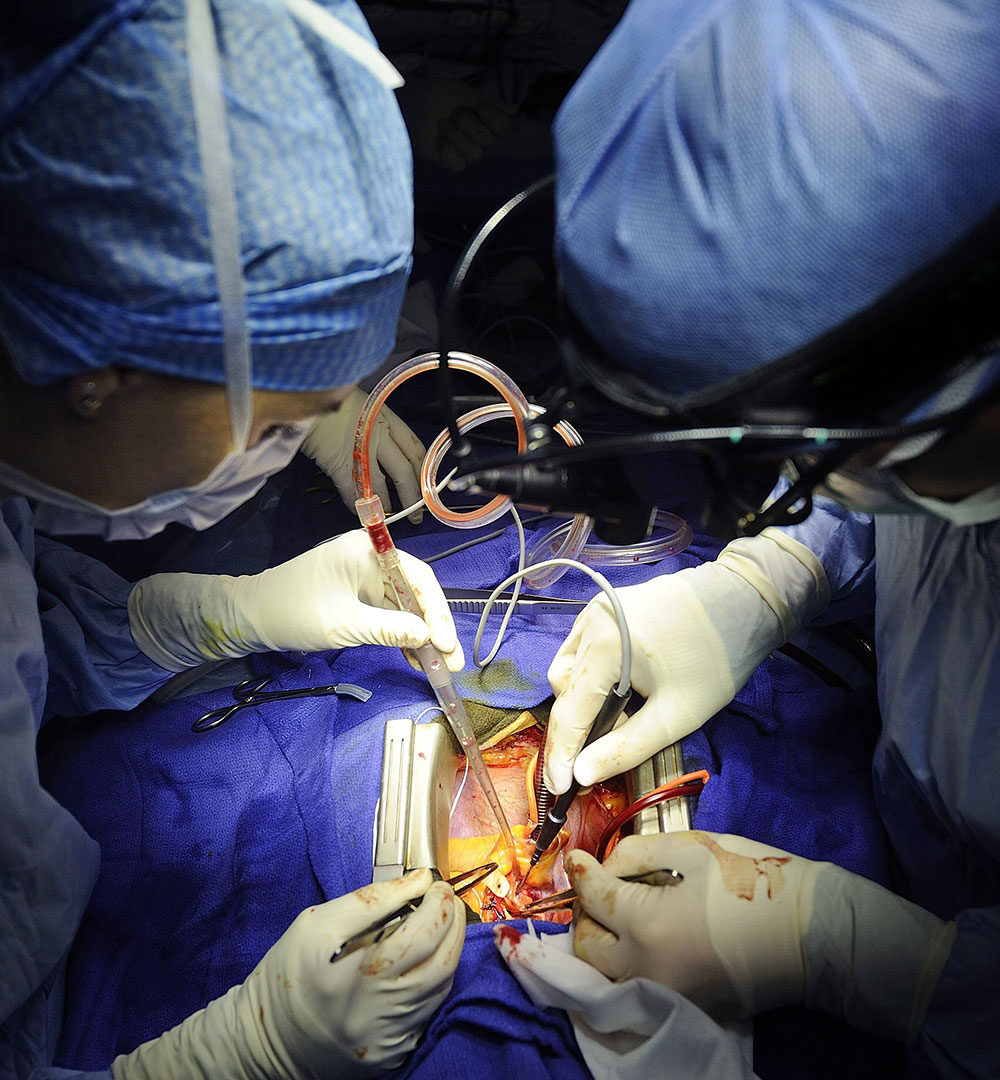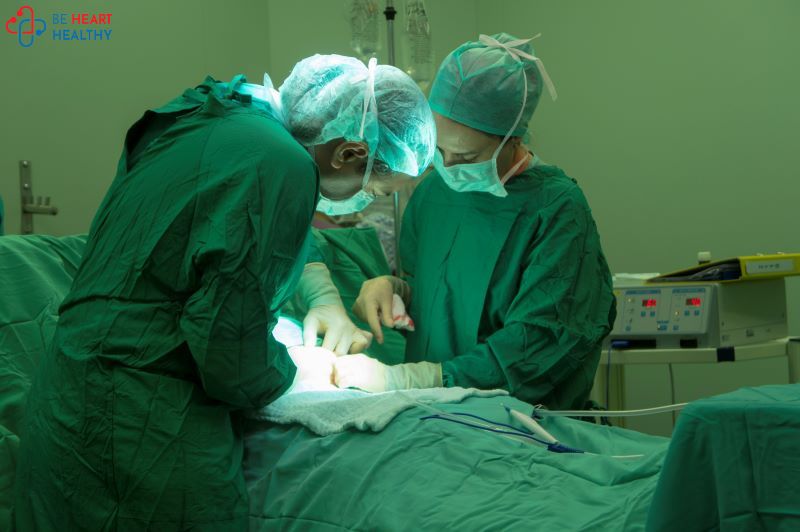The word “cardiac bypass surgery” is something that sends a shiver down everyone’s spine when you hear it. But let’s look into what exactly bypass surgery is and to exactly whom it is needed for.
The heart is a muscle which pumps the life-giving blood into all your organs. But like all muscles in the body, it needs nutrients and oxygen. In order to achieve this, the heart has its own circulatory system which we call the coronary circulation system. The arteries which supply blood to the heart are called “coronary arteries”.
If these coronary arteries are blocked completely or partially for whatever reason, the heart does not get enough blood, and the heart muscle dies after being starved of oxygen. Usually coronary blockage occurs due to an event called atherosclerosis where the inner layer of the vessels get thickened by fatty material and necrotic material. Another way is if a blood clot forms and blocks the artery completely.
Usually we can dissolve the clot using drugs or unblock the artery using a stent. However sometimes we have no other option but to resort to something called cardiac bypass surgery.
Let’s talk about what the term “bypass” means in layman’s terms. We use the word “bypass”, when it comes to roads. We use a bypass route, which is an alternative route which goes around and avoids the traffic congested route. Imagine the cardiac blood flow as traffic which is stopped when a tree has fallen on the main road.
Surgically we create a new route for blood to flow to the heart muscle by bypassing the blocked artery. We visualize the block via an imaging technique such as an angiogram. We cut and separate a vein in the leg and use it to connect at two points: The start point connected to an artery with intact blood supply like the aorta, and the other end to a point in the coronary artery beyond the obstruction. Another approach is not separating a vessel whole, but taking an artery in the chest like the left internal thoracic and diverting its end point to the coronary artery beyond the occlusion.
Now that we know what a bypass is, let’s talk about for exactly whom it is used for. The American College of Cardiology, and the American Heart Association has the guidelines below (extracted from Medscape) to select the people who need a bypass graft.

- Over 50% narrowing of the left main coronary artery
- Over 70% narrowing of the proximal left anterior descending (LAD) and proximal circumflex arteries
- Three-vessel disease in asymptomatic patients or those with mild or stable angina (chest pain) (Three vessel refers to the three main arteries of the heart)
- Three-vessel disease with proximal LAD stenosis in patients with poor left ventricular (LV) function
- One- or two-Vessel disease and a large area of viable myocardium in high-risk area in patients with stable angina
- Over 70% proximal LAD narrowing with either a cardiac ejection fraction (EF) below 50% or demonstrable ischemia (low blood supply on noninvasive testing
- Disabling angina
- Ongoing ischemia) in the setting of a non–ST segment elevation myocardial infarction (MI) that is unresponsive to medical therapy
- Poor LV function but with viable, nonfunctioning myocardium above the anatomic defect that can be re-vascularized
You might not understand these terms, but all you need to do is book an appointment with your doctor if you get symptoms such as chest pain, short of breathlessness and fatigue. They will do the necessary examinations and imaging tests to diagnose whether you fall into the categories specified above. At Symbiosis Specialty Hospital, we provide all the necessary care and treatment, if you think that you are suffering and if you think you need this. Take the leap to add more years to your life.
References
- medscape.com. 2021. Coronary Artery Bypass Grafting: Practice Essentials, Background, Indications. [online] Available at: <https://emedicine.medscape.com/article/1893992-overview> [Accessed 23 November 2021].
- Hillis, L., Smith, P., Anderson, J., Bittl, J., Bridges, C., Byrne, J., Cigarroa, J., DiSesa, V., Hiratzka, L., Hutter, A., Jessen, M., Keeley, E., Lahey, S., Lange, R., London, M., Mack, M., Patel, M., Puskas, J., Sabik, J., Selnes, O., Shahian, D., Trost, J. and Winniford, M., 2011. 2011 ACCF/AHA Guideline for Coronary Artery Bypass Graft Surgery. Circulation, 124(23).
- org. 2021. Coronary bypass surgery – Mayo Clinic. [online] Available at: <https://www.mayoclinic.org/tests-procedures/coronary-bypass-surgery/about/pac-20384589> [Accessed 23 November 2021].
- Eagle, K., Guyton, R., Davidoff, R., Edwards, F., Ewy, G., Gardner, T., Hart, J., Herrmann, H., Hillis, L., Hutter, A., Lytle, B., Marlow, R., Nugent, W., Orszulak, T., Antman, E., Smith, S., Alpert, J., Anderson, J., Faxon, D., Fuster, V., Gibbons, R., Gregoratos, G., Halperin, J., Hiratzka, L., Hunt, S., Jacobs, A. and Ornato, J., 2004. ACC/AHA 2004 Guideline Update for Coronary Artery Bypass Graft Surgery: Summary Article. Circulation, 110(9), pp.1168-1176.



